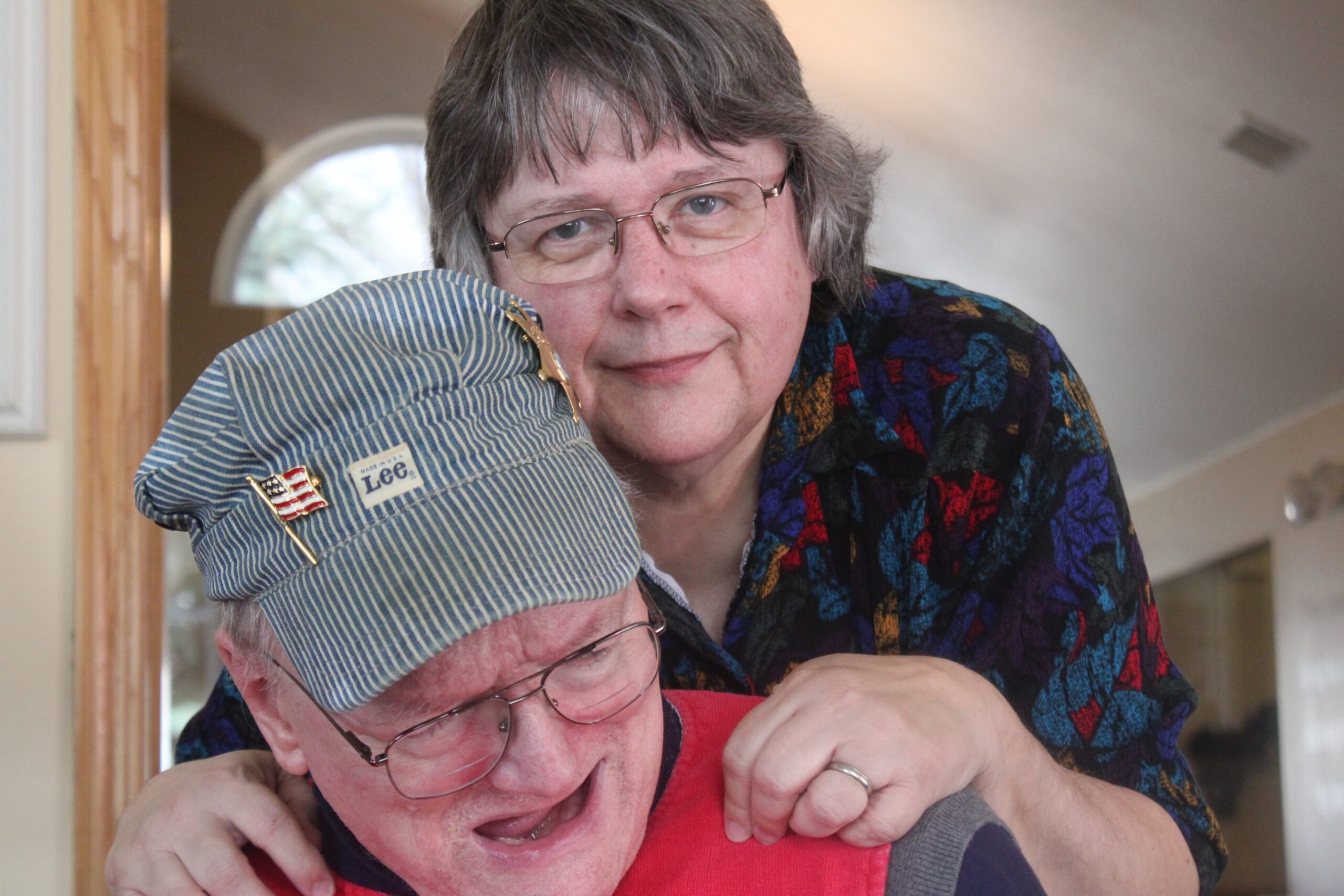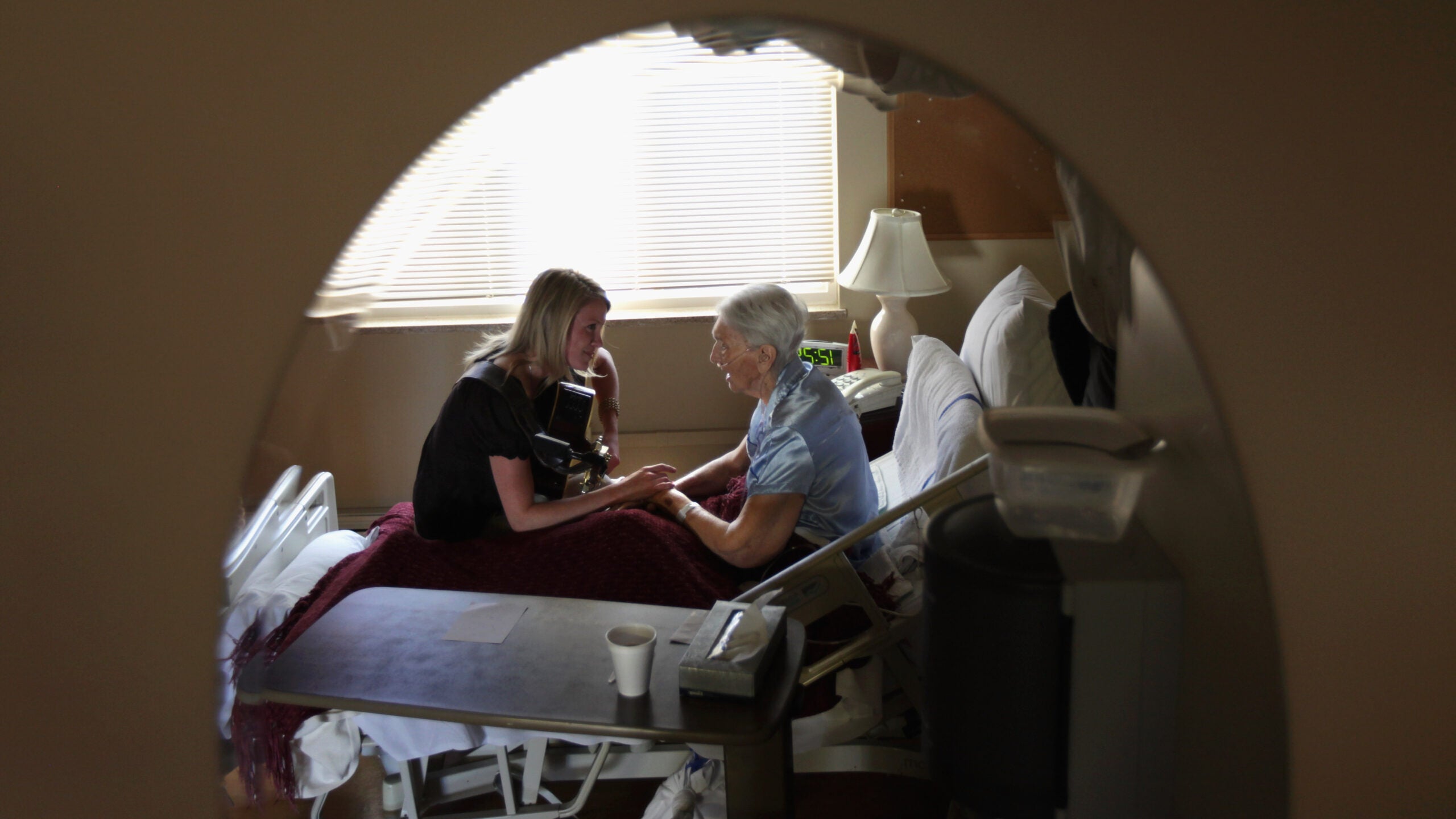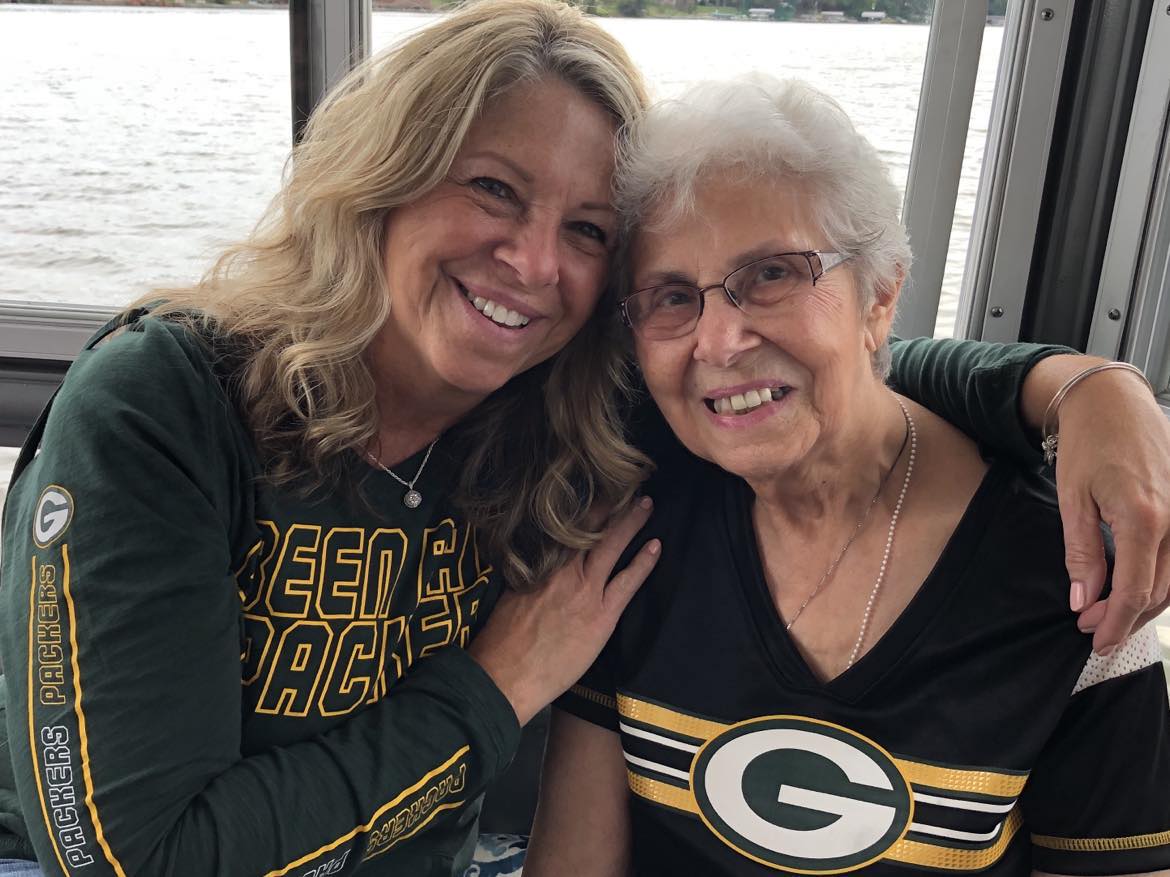There are around 30,000 people in Wisconsin nursing homes, but according to census data and information from the state Department of Health Services, different segments of the population use nursing homes at very different rates.
Bob Scorgie recently celebrated his 40th anniversary with his wife, Lois, at Azura Memory Care in Eau Claire, where he has been living for the past 10 years. Lois Scorgie said he was diagnosed with dementia when he was 60 years old.
“There came a time when he was in the hospital a great deal and he fell so much that I was told that he should have a home to live, instead of at home,” she said.
Stay informed on the latest news
Sign up for WPR’s email newsletter.
Scorgie said it’s hard not having her husband at home, but with Bob’s physical and medical needs taken care of, she can spend more time doing things the things he loves with him, like singing.
Bob is one of the 3.2 percent of white Wisconsin residents over the age of 65 that live in nursing homes. In the year 2000, that figure was 5.2 percent — but as families have turned to assisted living facilities and homecare options, the nursing home utilization rate among elderly whites has fallen.
Other groups, like elderly Asian-Americans, have also seen a decline in nursing home use, albeit on a smaller scale. In 2012, only 1.1 percent of Asian people over the age of 65 lived in nursing homes.
Pa Thao, the executive director of the Eau Claire Hmong Mutual Assistance Association, said she’s not surprised by the numbers. She said Hmong tradition holds that elders should stay home and be cared for by their children.
“It’s (the youngest son’s) responsibility to take care of the elder parents when they’re at the point where they can’t take care of themselves,” said Thao. “He will have his own family and still have his parents there.”
That tradition is changing. Thao said while it’s still a taboo to send an elder to a nursing home, they seem to want more independence.
“We’re seeing that there is a trend where the older parent just wants their own space, and not so much to be in a big household with their kids or their grandkids,” said Thao.
Now, Hmong-owned homecare businesses are stepping in to offer specialized medical care that children can’t provide.
In the Native American community, the decline of elders living in nursing homes has been comparable to their white counterparts. In 2012, 3.5 percent of Native Americans 65 and older lived in nursing homes.
Ho-Chunk Nation member Ron Wilber grew up taking care of his elders and now lives with his grandfather. He says families are busier and working more. Luckily, he said gaming revenues helped the Ho-Chunk create a comprehensive Elder Caregiver Program, which offers home visits.
“We’ve finally got the opportunity to afford for our elders,” said Wilber. “ I think that’s a big thing. I know (in) our tribe, we’ve got our tribal aging units. They get nurses, doctors.”
While the overall nursing home population in Wisconsin has declined in the last 10 years, the Department of Health Services says it’s plateauing. And, with close to 19 percent of the state over the age of 65, they expect demand for nursing home care among all ethnic groups to increase.
See four charts that help visualize how race and elder care intersect in Wisconsin by visiting here.
Editor’s Note: This is the fourth in a six-part series on aging and elder care in Wisconsin.
Wisconsin Public Radio, © Copyright 2024, Board of Regents of the University of Wisconsin System and Wisconsin Educational Communications Board.





